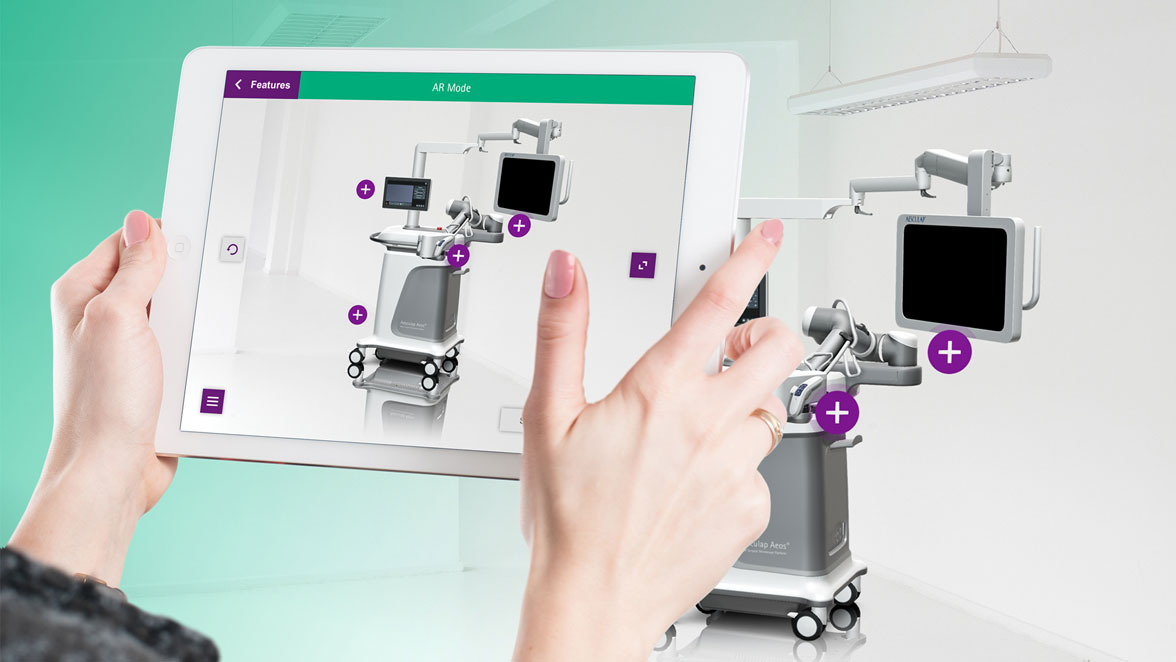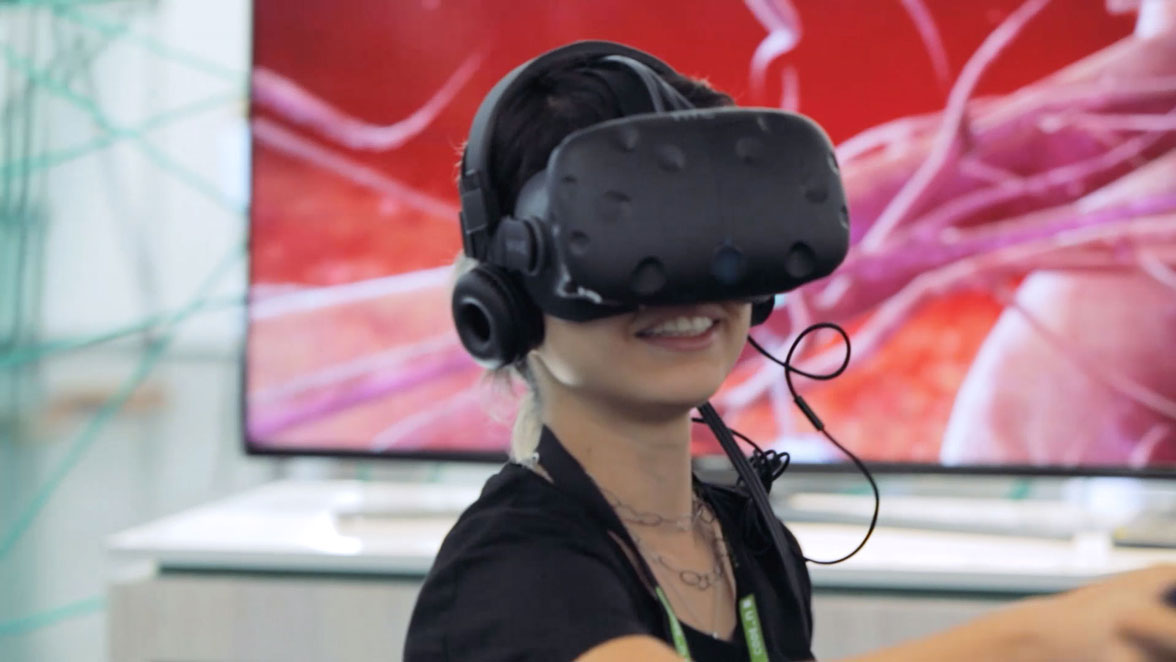
VR Experience • 2017
Aesculap OrthoPilot®
Virtual Surgery Training
The OrthoPilot® surgery navigation system by Aesculap B. Braun supports surgeons during the implantation process of knee and hip prosthetics.
At NMY I was the lead designer on a project team that developed a gamified VR simulation of a knee surgery guided with the OrthoPilot®, that was used for marketing and training purposes.
| Client: | Aesculap / B. Braun |
| With: | NMY Mixed-Reality Communication GmbH |
| My role: | Concept, Art Direction, UX/UI Design, UI & Animations in Unity |

















